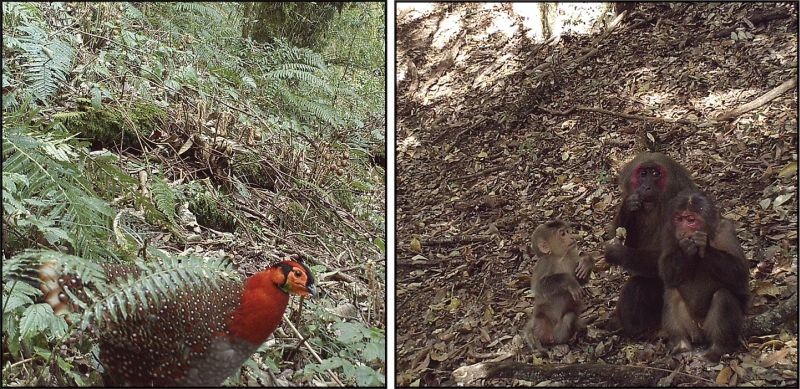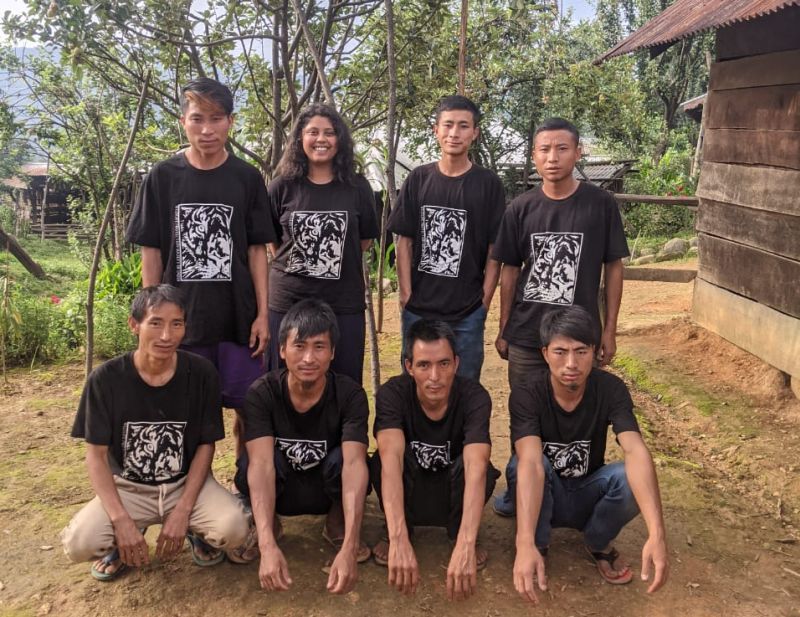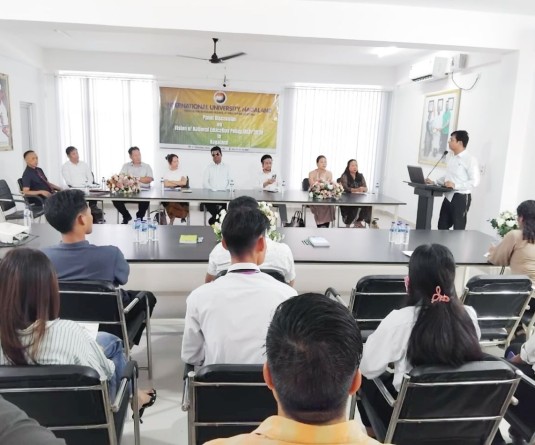A Blyth’s Tragopan, Nagaland’s state bird (Left) and a family of Stump-tailed macaques (Right) in the community forest of Thanamir. (Photo Courtesy: WPSI/ Thanamir)

Morung Express News
Dimapur | September 7
Community forests in Nagaland, and across Northeast, are often dismissed by scientists as ‘empty forests’. However, research carried out by the Delhi-based NGO Wildlife Protection Society of India (WPSI) in Thanamir village under Kiphire district has shown that this narrative could not be farther from the truth.
Speaking to The Morung Express on Tuesday, Ramya Nair, a researcher with the WPSI, stated that contrary to reports of ‘empty forest syndrome’ in parts of Northeast India, surveys carried out by the indigenous residents of Thanamir village in collaboration with national organisations to research and protect wildlife in their community forest, have found a host of rare and endangered wildlife in the forests.
Nair, who has also been leading a collaborative project with the people Thanamir village for about two years now, noted that similar efforts have also been carried out by local communities across the state and ‘the wildlife is now bouncing back in previously denuded and overhunted forests.’
According to Nair, the WPSI project came about when local leaders reached out to WPSI for support on how to better manage the forest around the Saramati area. Since late 2019, we have been working together to conduct systematic research with the aim to generate bio-cultural research which will inform any forest management systems that the local council or student union wishes to introduce.
 Thanamir Team
Thanamir Team
As part of the project, some Thanamir residents have teamed up with the WPSI to use ‘camera traps’ to capture of pictures of the rich wildlife that inhabit roughly 65-square-kilometres of Thanamir’s community forests. Some of the animals photographed through these camera traps included the elusive clouded leopards, Indian muntjac, Asiatic back bears, Asian wild dogs, stumped-tailed macaques and several other animals, many of which are globally endangered. Nagaland’s State bird, the Blyth’s Tragopan, has also been photographed using the camera traps.
Talking about their experiences with the project in a write-up provided by Nair, Thanamir locals and members of the project team, Jona Yimchunger and Rethsucham Yimchunger said that they were surprised by the abundance of wildlife and “thrilled to see that our forest is home to rich biodiversity.”
As per the write-up, earlier this year, the team also collaborated with the Bird Count India project Nature Conservation Foundation (NCF) to learn more about birds and develop skills in bird identification. Having grown up surrounded by forest and wildlife, the local team members have incredible local knowledge of birds and animals, according to Nair.
“Since the training, we have documented over 220 bird species in our forest. We have been practicing for months with the help of outside experts and now feel confident to independently conduct bird surveys on our own. We want to study birds as they migrate through the seasons. We have also started sharing our findings on global birding platforms like eBird,” said Rethsuthong Yimchunger, an enthusiastic birder and member of the team.
Nair stated that over the years, local youths and leaders in the Thanamir region have instituted various resolutions to curb over-hunting of wildlife and protect the forest. The research being conducted is aimed at strengthening these management systems through an evidence based approach, she added.
The project will also integrate socio-ecological data, which will be used by the local council and student union to co-develop plans that prioritize both wildlife populations and community well-being. “We want to understand the intricate relationships people have with nature and approach them sensitively and respectfully,” Nair stated.
While the projects seems to be heading in the right direction, Nair underscored that there are very few sources of cash income for Thanamir’s residents, so most people depend on nature in one way or another.
Farming is largely for subsistence and does not create much income and people depend on logging and limited hunting to generate much-needed cash for basic expenses like school fees for children. Government aid is hard to come by and these activities do create pressures on the forest and wildlife, she noted.
Stating that a similar scenario persists in a lot of rural areas in the state, Nair said that the NGO hopes to build local capacity for livelihood enhancement through research and other activities especially in areas where local communities are mobilising themselves to protect their forests.
There are currently over 400 community conserved areas across Nagaland – the highest of any state in the country, and the efforts made my local communities to protect their forests, must be acknowledged, supported and appreciated, Nair added.





